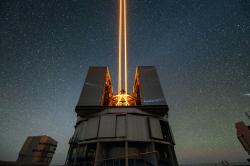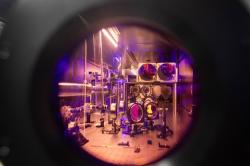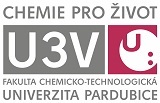Je to zpráva tak trochu jako z Hvězdných válek a současně ze státních čínských médií, ale přesto stojí za pozornost. Pokud se to potvrdí, mohl by to být technologický průlom, který posune laserové zbraně na vyšší level.
Podle South China Morning Post čínští vědci vytvořili doposud největší syntetický krystal selenidu barya a gallia (BGSe krystal). Tým Hefei Institutes of Physical Science, který vedla Haixin Wuová, předvedl válcovitý krystal o průměru 60 milimetrů. BGSe krystaly představují slibný nelineární optický materiál, který velmi efektivně konvertuje krátkovlnné infračervené laserové paprsky na středně- a dlouhovlnné infračervené paprsky.
Podle dostupných informací by tento krystal měl vydržet intenzivní laserový paprsek o výkonu až 550 MW na čtvereční centimetr. To je zhruba desetinásobek oproti výdrži většiny dnešních špičkových vojenských materiálů. Takové krystaly umožňují postavit ultravýkonné infračervené lasery s dalekým dosahem v atmosféře, s nimiž by mělo být mimo jiné také možné ničit satelity ze zemského povrchu. Netřeba zdůrazňovat, jak by takové zbraně změnily situaci na nízkých oběžných dráhách.
BGSe krystaly objevili Číňané v roce 2010, fascinovali s nimi svět a od té doby na nich pracují. Produkce těchto krystalů je nesmírně obtížná a na Západě se moc nedaří. Pokud má být takový krystal velký a stabilní, vyžaduje to extrémní přesnost. Velmi čisté baryum, galium a selen se zahřívají na 1 020 °C a pak pomalu chladnou v přísně kontrolovaném prostředí. Trvá to déle než měsíc.
Vypěstované krystaly se žíhají několik dní při teplotě 500 °C, poté se velice pomalu ochlazují, a následně leští diamantovými pilami a suspenzí oxidu ceru, aby se dosáhlo optické čistoty a strukturální integrity. Výroba trvá dlouho, ale podobné, byť méně odolné krystaly pro západní lasery, se vyrábějí mnohem déle. Například masivní safírový krystal dopovaný titanem pro systém ZEUS na University of Michigan vyráběli déle než 4 roky.
Čínský tým sice zmiňuje civilní využití v medicínském zobrazování nebo hypercitlivých infračervených detekčních systémech, ale nikdo nepochybuje o tom, k čemu budou lasery s gigantickými BGSe krystaly primárně určeny. Lze se vsadit, že západní vývojáři vojenských laserů teď budou jako na trní.
Video: Gallium Selenide (GaSe) non-linear optical single crystal
Literatura
Strykery s 50 kW lasery zneškodňují minometné projektily a další hrozby
Autor: Stanislav Mihulka (03.06.2022)
Americká armáda dostala s předstihem 300 kW bojový laser
Autor: Stanislav Mihulka (19.09.2022)
DARPA vyvíjí kvantový laser s entanglovanými fotony pro špatné počasí
Autor: Stanislav Mihulka (15.06.2024)
Titan-safírový laser na čipu představuje technologický průlom
Autor: Stanislav Mihulka (07.07.2024)
Diskuze:
Proč výkonný laser?
Pavel Polouček,2025-07-28 10:23:08
Nějak mi uniklo, proč by měl být nelineární optický krystal (asi BaGa4Se7, určitě ne BGSe) vhodným materiálem na výkonný laser?
Krátkou diskuzí s ChatGPT jsem zjistil, že hlavní schopností tohoto krystalu je konverze 2 IR fotonů na 1 viditelný, a to s vysokou účinností (10-30%). To je v souladu s aplikací zmíněnou soudruhy Číňany: infračervené detekční systémy. Naopak účinnost tohoto krystalu pro down-konverzi IR fotonů je pod 10^-8, takže pro jakoukoliv praktickou aplikaci je zcela nevhodný.
V obou případech by nicméně většina z těch 550 MW/cm^2 zůstala v tom dokonalém krystalu, takže už při prvním výstřelu by efektivně odstranil agresora, který se rozhodl paprsek výkonný laser přecedit přes nelineární krystal, místo aby jím vystřelil napřímo. Nechci podceňovat nebezpečnost Číny, ale myslím, že v tomto případě můžeme být klidní.
Re: Proč výkonný laser?
Jan Roháč,2025-07-28 12:25:14
To je přesně důvod, proč jsem přestal Osla číst. Jsem tady po delší době a koukám, že je to stále horší. V dnešní době, kdy má i úplný neangličtinář přímý přístup k vědeckým zdrojům, nevidím důvod, proč bych měl číst přežvýkané vědecké články, zabalené do lokálního, propagandistického, umaštěného papíru.
Re: Proč výkonný laser?
Josef Hrncirik,2025-07-31 15:50:19
10.1016/j.optlastec.2023.110455
The experimental setup is shown in Fig. 1. The BGSe-OPO was pumped by a 1064 nm master oscillator power amplifier (MOPA). The master oscillator is a 808 nm pulsed LD pumped Nd:YAG laser with a plane-parallel cavity structure, which has been reported [30]. The Nd:YAG laser operated at pulse repetition frequency (PRF) of 1 kHz with an electro-optic (EO) Q-switch. The p-polarized beam from the master oscillator passes through the pulsed LD side-pumped Nd:YAG module and a quarter-wave plate (QWP) twice. Then the amplified s-polarized beam is reflected by a polarizing beam splitter (PBS). The pump module was composed of five pulsed 808 nm LD arrays, each with a maximum power of 900 W, and a Nd:YAG rod (0.6 at % doped) with diameter of Φ5 mm and length of 148 mm. The pump power was measured by a thermopile power meter (Newport, 919P-050–26) and the temporal pulse waveform was detected by an InGaAs photodiode (Thorlabs, DET08C). When pump current is set to 40 A, the Nd:YAG MOPA system reached an output power of ∼ 7 W with a pulse width of 5.52 ns.
A half-wave plate (HWP1) and a Brewster polarizer were combined as an energy controller to adjust the pump energy. The 1064 nm pump beam has a large divergence angle after the Brewster window because of the thermal lens effect of the side-pumped Nd:YAG module. A BaF2 based lens, which has a focal length of 500 mm, is utilized to compensate the beam divergence. Then the 1064 nm pump beam passed through an optical isolator (Thorlabs, IO-10-1064VHP) to avoid the possible damage to the Nd:YAG laser from the reflected pump. Additionally, the second half-wave plate (HWP2) was inserted before the BGSe-OPO to adjust the polarization for type I phase-matching. The pump beam before BGSe-OPO had a diameter of ∼ 2.13 mm.
The BGSe-OPO has a linear cavity configuration, consisting two BaF2 planar mirrors M3 (1.064 μm AR and 1.35–1.65 μm & 3.65–4.50 μm HR) and M4 (3.65–4.50 μm AR and 1.064 μm & 1.35–1.65 μm HR). The cavity length was set to 40 mm. The pump double-pass single resonant oscillator (DP-SRO) configuration is used to increase the conversion efficiency and reduce the threshold [31]. The type I phase-matching BGSe crystal used in the experiment has dimensions of 8 mm × 8 mm × 15 mm, cut at θ = 53.6° and φ = 0°. By rotating the crystal, the angle between the optical axis and the pump wave vector could be continuously changed in x-z plane to achieve angular tuning. The crystal was grown by Bridgman-Stockbarger method in Technical Institute of Physics and Chemistry, Chinese Academy of Sciences [24]. Both side of the BGSe crystal was well polished and AR coated for 1.064 μm, 1.3–1.6 μm and 3–5 μm. The transmittance of the AR coated BGSe crystal was measured to be about 84.86 % at 1064 nm. There is no significant change on the transmittance when the temperature raised from 20 °C to 70 °C, so the variation of pump absorption during temperature tuning is negligible. The crystal was mounted in a water-circulating copper sink whose temperature is controlled by a thermostat water bath (Coolum instruments, HX-105). The temperature control accuracy is ± 0.1 °C. The wavelength of the generated mid-IR idler was calculated according to the energy conservation relationship 1/λp = 1/λs + 1/λi and the signal wavelength, which was measured by a spectrometer (Yokogawa, AQ6375). The idler power was measure by a thermal power sensor (Ophir, 3A-FS), covering with a BaF2 mirror (3.65–4.50 μm AR and 1.064 μm & 1.35–1.65 μm HR) to block the near infrared pulse.
maximum output power was measured to be 483 mW under an incident pump power of 5.5 W, corresponding to a pump-to-idler conversion efficiency of 8.78 %. As evident from the plot, the mid-IR idler power increases almost linearly with a slope efficiency of 15.4 %. No trend of saturation was observed under the maximum pump intensity in the experiment. Current literature on high repetition rate 1064 nm laser pumped BGSe-OPO is summarized in Table 1. The 1064 nm laser pumped BGSe-OPO at kHz level repetition rate is first reported in this work. Furthermore, optical damage was observed on the front facet coating of the BGSe when continue enhancing pump power beyond 5.7 W. This corresponds to pump fluence of 0.175 J/cm2 or intensity of 31.7 MW/cm2. In a pump double pass OPO configuration, the peak on-axis values of the pump intensity could be estimated to twice of the incident pump intensity [10]. Accordingly, the laser induced damage threshold is fluence of 0.35 J/cm2 or intensity of 63.4 MW/cm2. The laser induced damage threshold is lower than the results of lower pulse repetition rate laser pumping [19], [32]. It could result from that the laser induced damage threshold decrease with the increase of pulse repetition rate [25]
Fig. 5(c) shows the relationship between average output power and wavelength for angle tuned BGSe-OPO. Typical enhancement of idler power can be observed at normal incidence, corresponding to idler wavelength of 4.18 μm. When the pump beam propagates through BGSe crystal at normal incidence, Fresnel reflection on the facet will provide additional feedback for BGSe-OPO. The general decreasing trend of the idler power at longer wavelengths could be attributed to the reducing of λi-1 dependent parametric gain. On the other hand, the transmittance of BGSe coating decrease with the increase of incidence angle, which would lead to the raise of cavity loss. As a result, it will show a decline in the idler power when the rotation angle of BGSe is large. Similarly, the idler power shows an increasing trend in the shorter wavelength range of 3.77–4.06 μm. Then this trend is gradually canceled by the continual growth of cavity loss resulted from the increasing incidence angle. Besides, the dips around 4.28 μm and 4.71 μm are due to the transmittance drops of output coupler of OPO. Comparing the tuning characteristics of angle tuned BGSe-OPO and temperature tuned BGSe-OPO in this work, it could be found that the angle tuned BGSe-OPO could perform agile tuning across a wide mid-IR range. On the other hand, the temperature tuned BGSe-OPO is free from the cavity loss caused by crystal rotation. So, the temperature tuned BGSe-OPO shows a relatively flatter tunable output curve, which is more conducive to practical applications.
The beam quality factors M2 of idler at normal incidence were measured by the 84/16 knife -edge method. A BaF2 based lens with focus length of 200 mm was used to compress the divergence angle of the idler beam. The beam sizes at different distances are shown in Fig. 7(a). The M2 was measured to be 14.84 and 17.15 in horizontal (X) and vertical (Y) directions. The deterioration of the beam quality in Y direction could result from the heterogeneity of the BGSe along the crystallographic axis b, which is parallel to the Y direction in the experimental configuration. To evaluate the stability of the BGSe-OPO, the pump and the idler powers were recorded for 30 min with an interval of 1 s, shown in Fig. 7(b) and Fig. 7(c). The root mean square (RMS) fluctuation of the mid-IR idler power was less than 1 %, approximate to it of pump power. The periodic oscillation of pump power stems from the variation of LD temperature, which would affect the LD wavelength and the absorbed pump power of Nd:YAG. It is believed that the stability of the Nd:YAG MOPA system pumped BGSe-OPO can be further improved by suppressing the fluctuation of LD temperature.
Malý kalibr jedovatého selenidu hrozně kadící irradiance scales as 1/M4
na propalování sovětských sputniků určitě nebude stačit.
Buy an article and perish! MAGA!! https://opg.optica.org/ol/abstract.cfm?URI=ol-45-16-4595
"High energy mid-infrared laser pulse output from a BaGa4Se7 crystal-based optical parametric oscillator," Opt. Lett. 45, 4595-4598 (2020)
Report a high energy, narrow spectral linewidth mid-infrared laser pulse output from a laser-pumped (BGSe) crystal-based optical parametric oscillator (OPO). Output pulse energy of 21.5 mJ was obtained at 3816 nm, with spectral width of 12 nm and pulse width of 11.4 ns,
corresponding to peak power as high as 1.89 MW.
A BGSe crystal with aperture size of 10x10 mm and length of 16 mm was applied as the nonlinear crystal in a pump fed back OPO for achieving such high pulse energy output from the simple oscillator scheme.
Re: Re: Proč výkonný laser? Dyť se TO přehřeje!
Josef Hrncirik,2025-07-31 16:03:42
Barium chalcogenides for nonlinear optics in the mid-IR: Properties and applications
https://doi.org/10.1016/j.omx.2024.100319
Jak ví dno z říti fig.1 trans mission neščastného BGSE je v použitém IR buzení i modulaci jen cca 65% tj. 35% je Vy užito k ničení krystalu přátelskou palbou!
Počítám to správně?
Vratislav Zapletal,2025-07-27 22:11:55
Průměr krystalu je 6cm. Plocha je tím pádem 3,14x9= 28,26 cm2. * 550 MW na čtvereční centimetr = 15543 MW = 15,543 GW. No snad bude na takové střílení Temelín stačit :-). Přijde mi to krapet divoké.
Re: Počítám to správně?
Vojta Ondříček,2025-07-28 02:47:45
Divoké je to tak jako tak.
V případu Rail gun je podobný problém: potřeba šíleného výkonu po krátkou dobu. To se dnes asi řeší blokem (baterií) kondenzátorů.
Dá se to řešit i roztočeným setrvačníkem u generátoru. Aspoň se tohle zmiňovalo v případu výroby el. proudu pro Rail gun.
V textu článku není doba laserového pulzu uvedena, může jít také jen o zlomky sekundy.
Dostrel
Radoslav Pořízek,2025-07-27 12:48:26
> Takový krystal by mohl pohánět ultravýkonné lasery, které dostřelí na ohromnou vzdálenost, třeba až na orbitu.
Z principu laseru jeho limitiaciou nie je dostrel. Aj velmi slabym laserom sa da "dostrelit" az na Mesiac a naspat (meranie vzdialenosti pomocou odrazu od tercikov na Mesiaci).
Predpokladam, ze kvoli ochrane prd Slnecnym ziarenim maju druzice reflexny povrch, takze strielat do nich laserom asi nebude to prave orechove.
Dostřel světla
Vojta Ondříček,2025-07-26 13:48:21
Před pěti lety jsem si koupil malou svítilnu a tou střílel světlo na měsíc a kdybych žil na rovníku, tak bych mohl střílet i na Centauri.
Ten čínský superlaser je na ničení objektů, třeba raket, dronů, bombardérů a podobně. Problémem takové zbraně na velkou vzdálenost je její precizní zamíření, tedy velejemná mechanika a stabilita.
Kapil Kajal záměnou MW za Mt TNT chce vyprovokovat red necks k invazi na Formosu
Josef Hrncirik,2025-08-01 08:47:17
Interesting Engineering 25. 7. 2025.
MILITARY.
Kapil Kajal:
China builds world’s largest laser crystal to blast satellites from the ground
The crystal can withstand intense laser energy of up to 550 megawatts per square centimeter.
Updated: Jul 25, 2025 08:38 AM EST
Chinese scientists have claimed to create the world’s largest barium gallium selenide (BGSe) crystal to enhance long-range laser systems and improve infrared sensing technologies significantly.
The synthetic crystal, developed by researchers at the Hefei Institutes of Physical Science under the Chinese Academy of Sciences, measures 60 millimeters (2.36 inches) in diameter.
It efficiently converts short-wave infrared lasers into mid- to far-infrared beams. These wavelengths can travel longer distances through the atmosphere with minimal loss, according to the South China Morning Post.
Re: Kapil Kajal záměnou MW za Mt TNT chce vyprovokovat red necks k invazi na Formosu
Josef Hrncirik,2025-08-01 09:40:29
Yac Ví dno z říti na Atmospheric electromagnetic opacity - Optical window - Wikipedia čistější okna na děrování sputniků poskytuje VIS, i běžné cca 1 um Nd IČ. Není aplikovat obtížně dostupné okno kolem 3 um.
500 MW/cm2 bez udání doby působení je prázdný potlach.
„…Accordingly, the BGSe laser induced damage threshold is fluence of 0.35 J/cm2 or intensity of 63.4 MW/cm2. The laser induced damage threshold is lower than the results of lower pulse repetition rate laser pumping [19], [32]. It could result from that the laser induced damage threshold decrease with the increase of pulse repetition rate [25]…“
Při průměru krystalu laseru 6 cm to dá 28 cm2, tj. yen max. cca 9,8 J/ pulz. při frekvenci 1 kHz je to sice zdánlivě Až 20 kW IČ, ale při účinnosti pro IR 3 um jen 10% bychom museli budit cca 200 kW Nd 1 um a hlavně chladit hlaveň laseru 200 kW varem moči odparem cca 90 g/s (nebezpečí uvaření !!!), či bez varu průtokem cca 1,2 piva/s.
Re: Re: Kapil Kajal záměnou MW za Mt TNT chce vyprovokovat red necks k invazi na Formosu
Josef Hrncirik,2025-08-01 11:25:29
20 kW/28 cm2 = cca 0,7 kW/cm2 při výstupu z krystalu, tj. cca max. PB hořák pro izolatéry a toho se sputnik nebojí. Sálání při albedu 0,05 je při 300 K cca 30 W/m2 tj. 3 mW/cm2. Povrch 300*700 x větší příkon zahřeje jen ne rovnovážných cca 300*(300*700)**1/4=6400 K. To je skutečně bez piva nebezpečné. a) nehrozí však že se někdo ze Ze mě trefí. b) i dokonalý laserový paprsek má divergenci min. 1,22.vlna/D krystalu = 1,22*3/60 000 = 61 urad = 12,5 ´´ (sec), tj. po 3,1 km je ozařování jen poloviční, tj. 350 W/cm2. Na orbitu 300 km daleko to bude slabší 2**(300/3,1)=10**96,8x slabější=,... = o 88 dB slabější světla hvězdné oblohy 3,75 nW/(cm2.na srat).
Po rozřezání krystalu na průřez jen 1 cm2 pak bude divergence 6x větší, tj. poloviční již při vzdálenosti 520 m.
Pakliže v krystalu nerezonuje mód žádoucí mód 00, divergence je M x větší. Při naměřeném M2 =M**2 = 16 je tedy divergence ještě 4x horší, tj. již po 130 m ozáření klesne na polovinu.
...The M2 was measured to be 14.84 and 17.15 in horizontal (X) and vertical (Y) directions. The deterioration of the beam quality in Y direction could result from the heterogeneity of the BGSe along the crystallographic axis b, which is parallel to the Y direction in the experimental configuration ..."
Diskuze je otevřená pouze 7dní od zvěřejnění příspěvku nebo na povolení redakce






